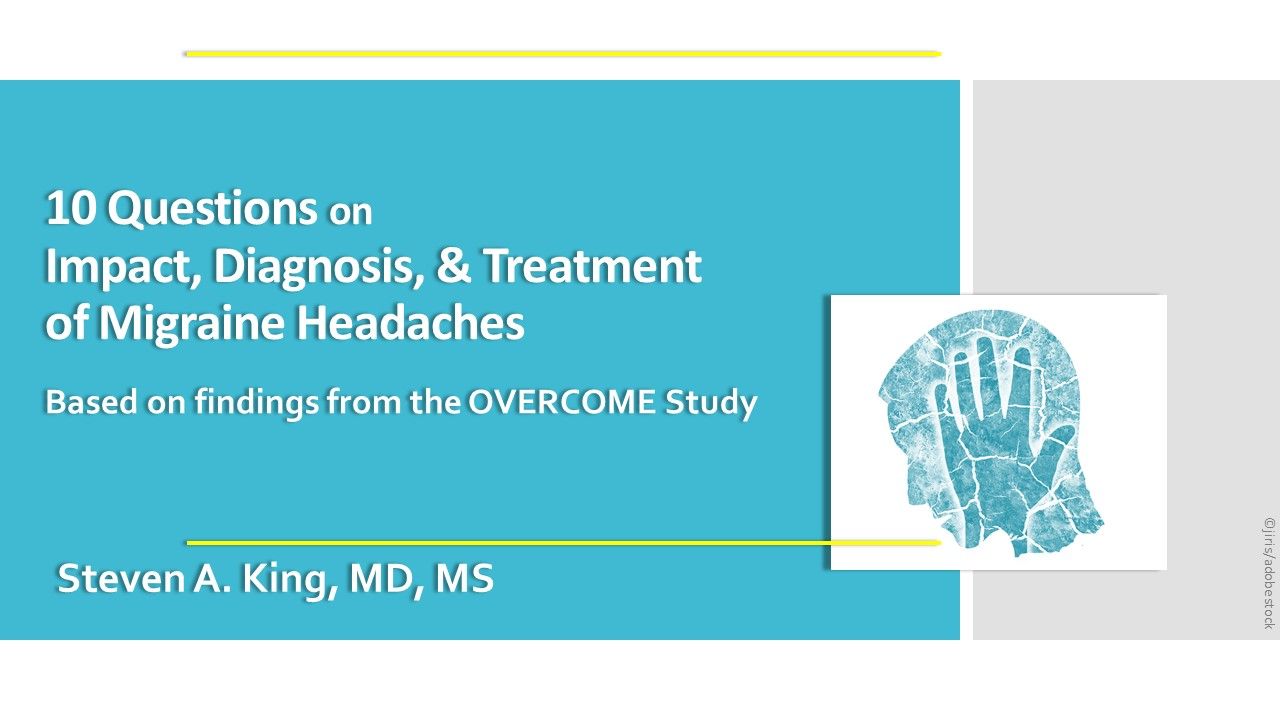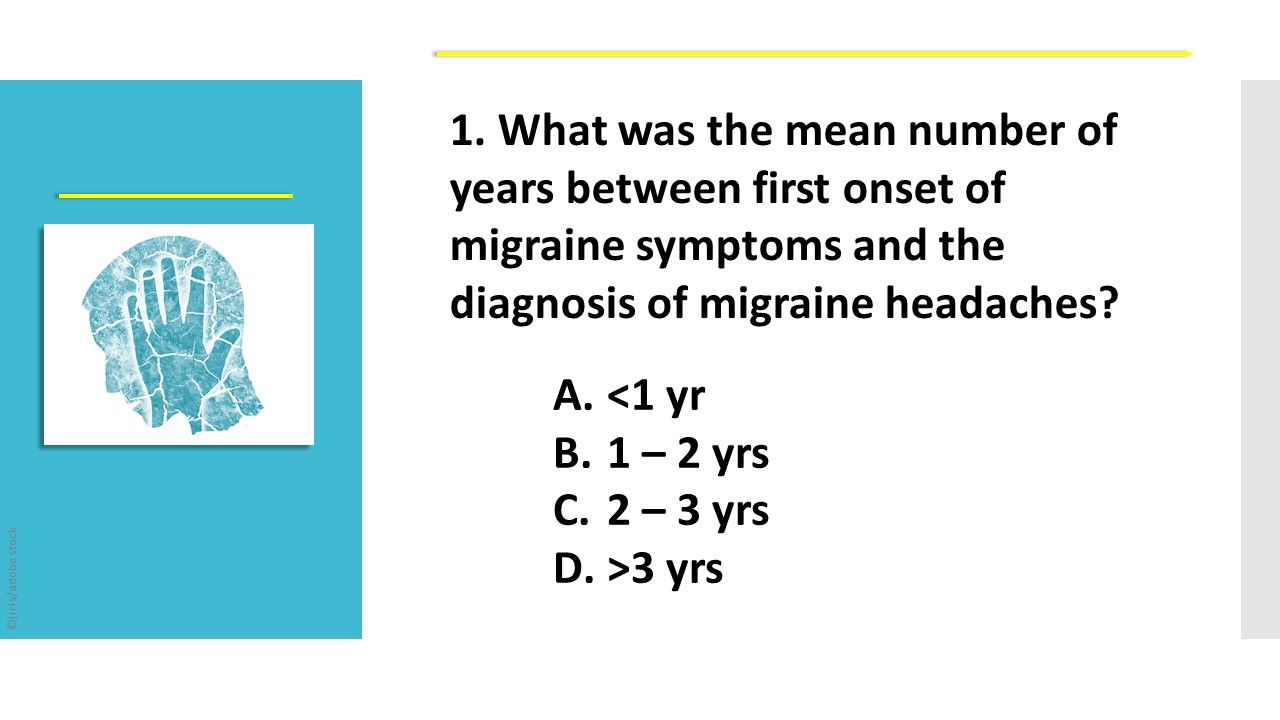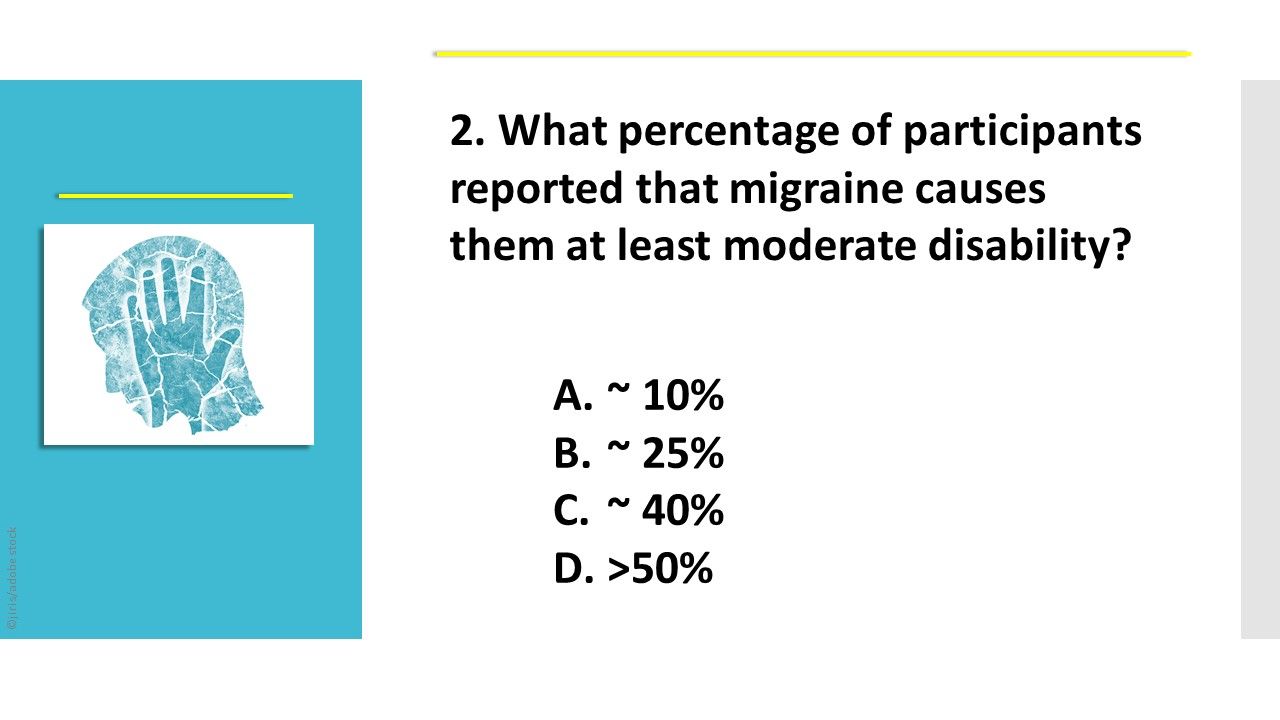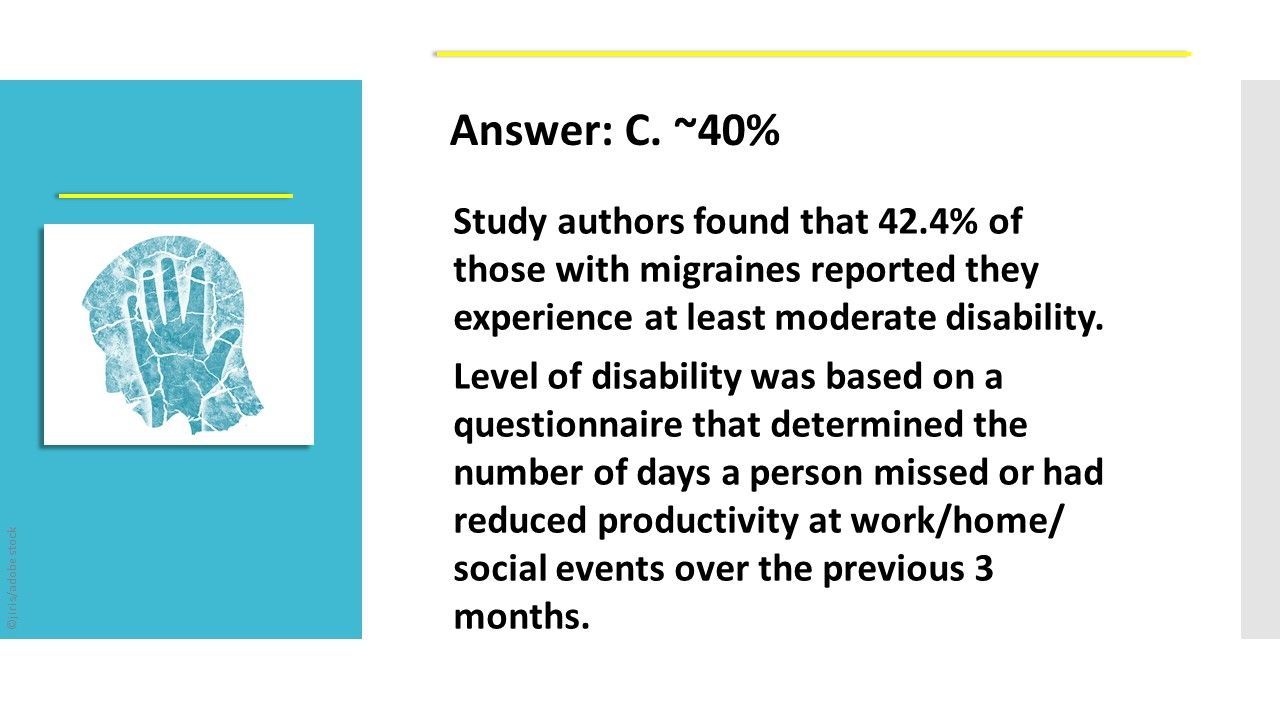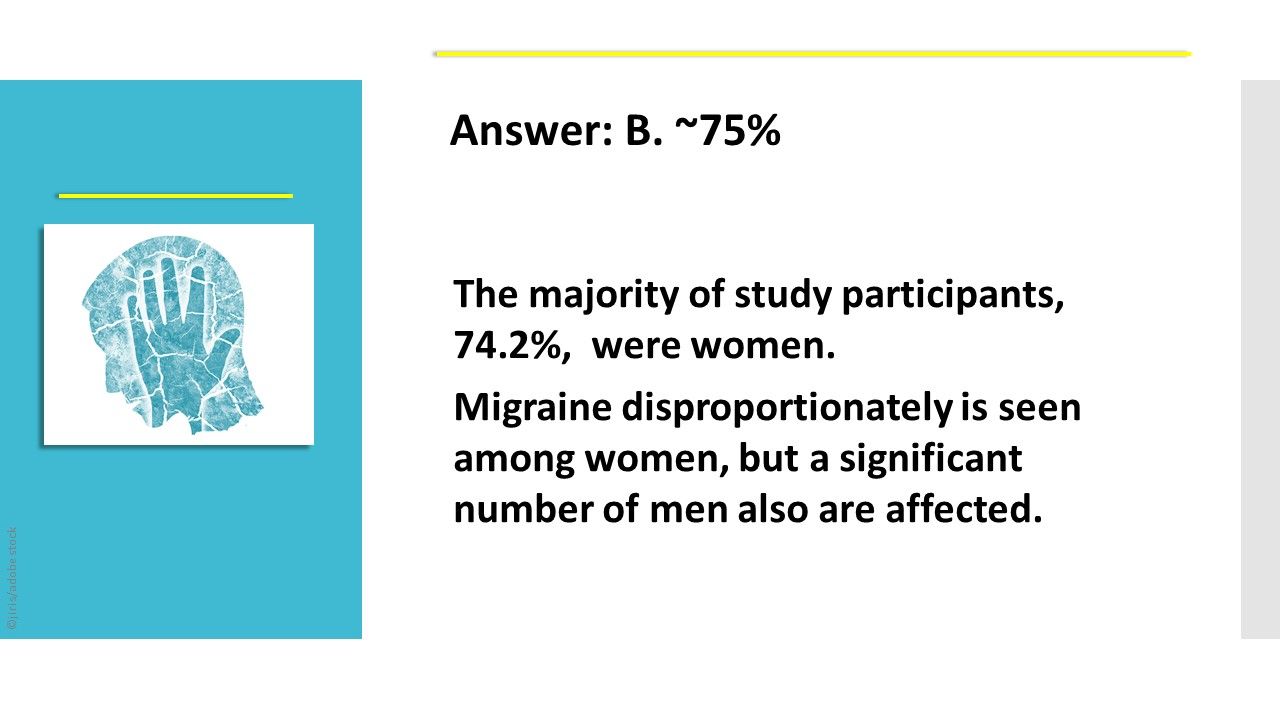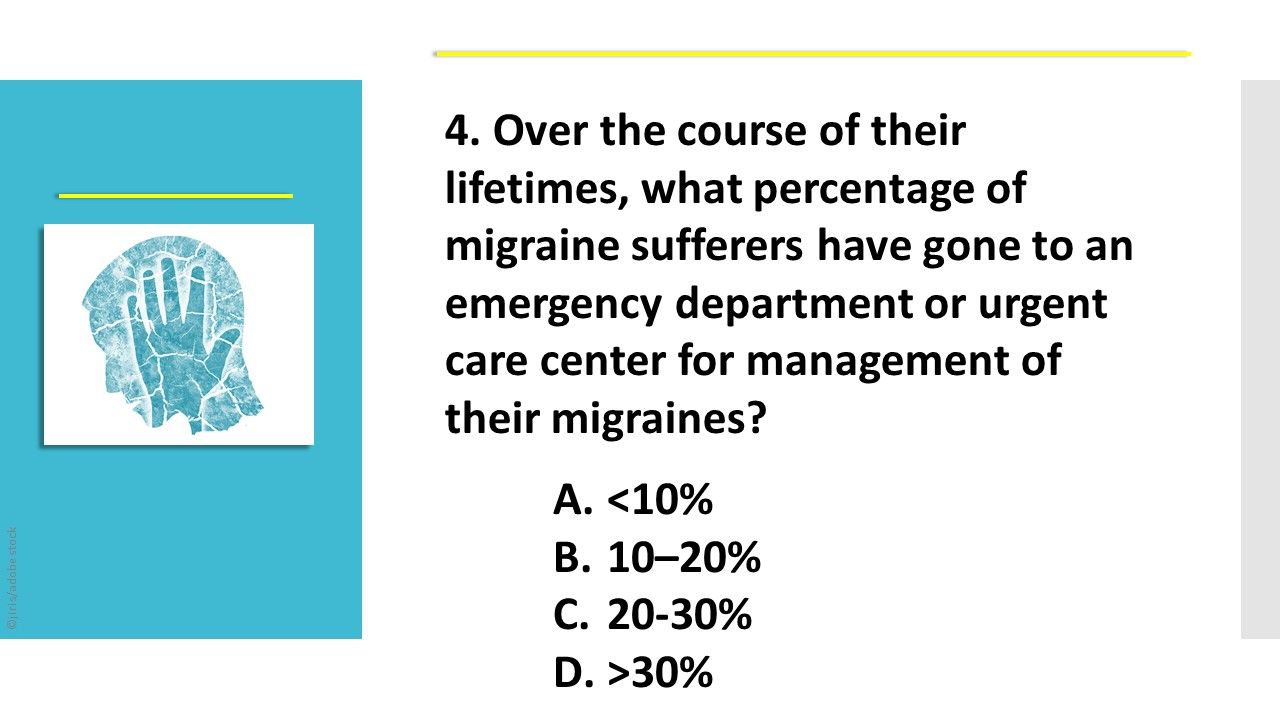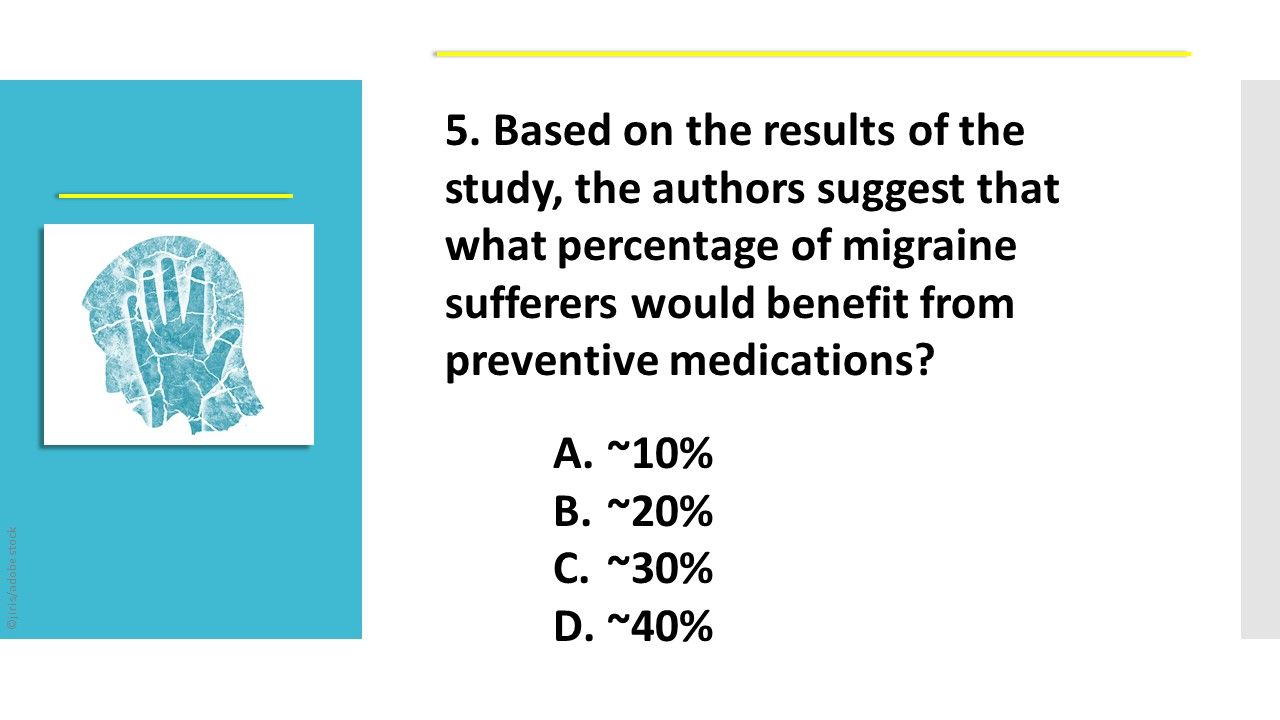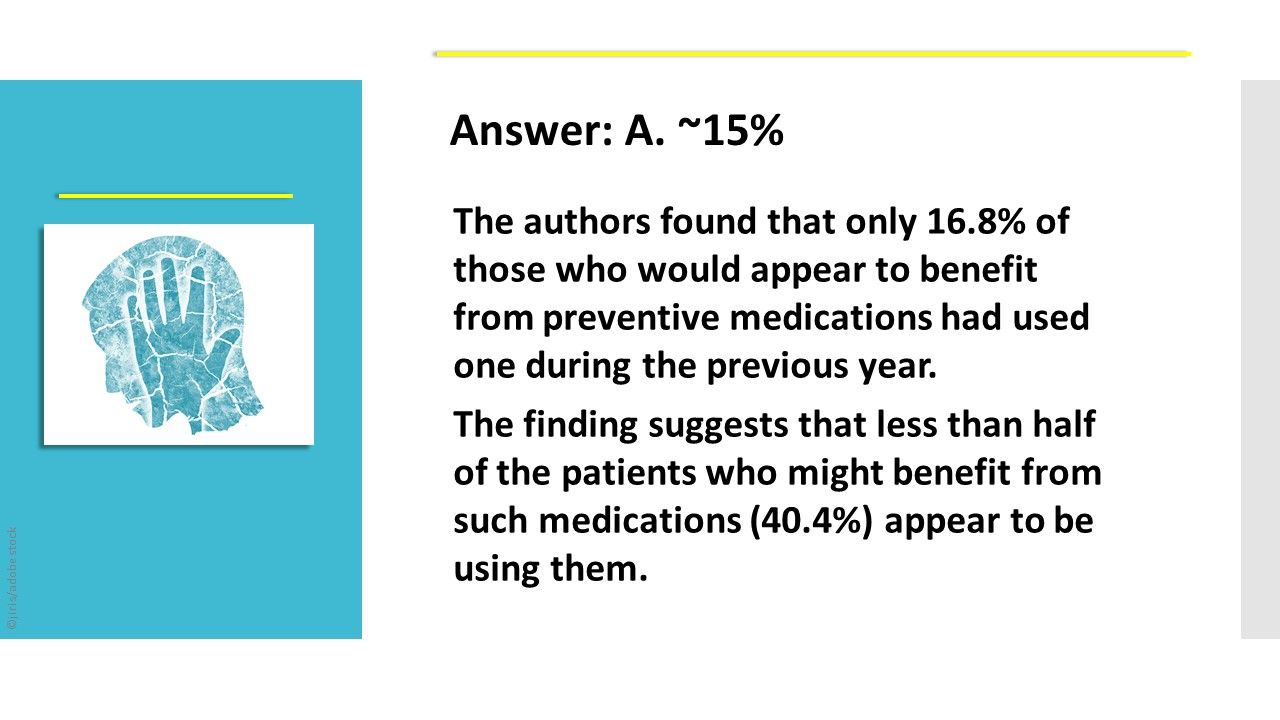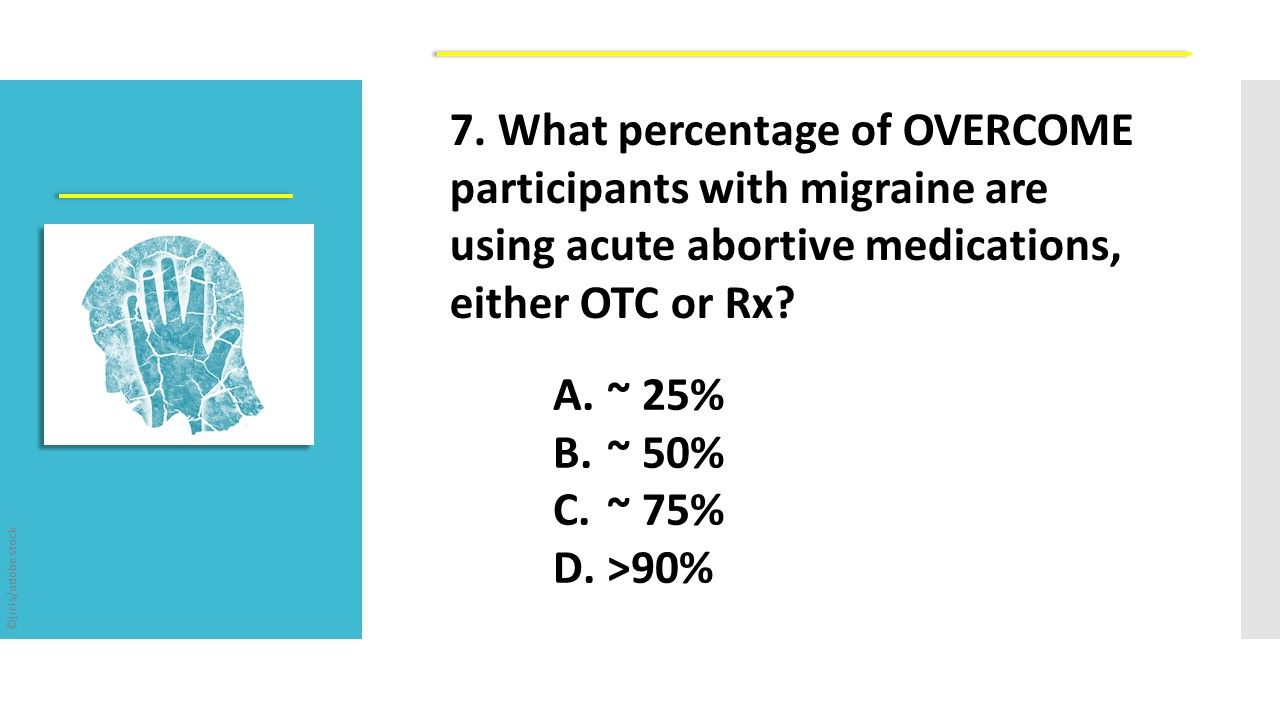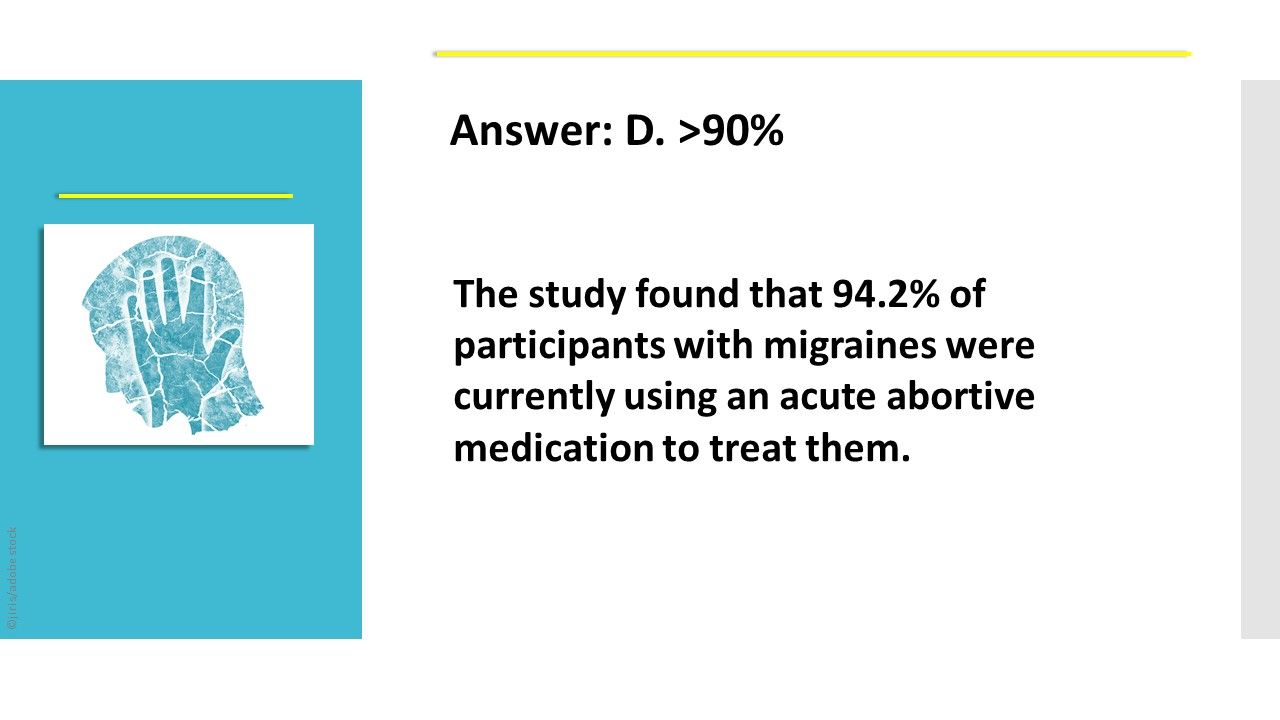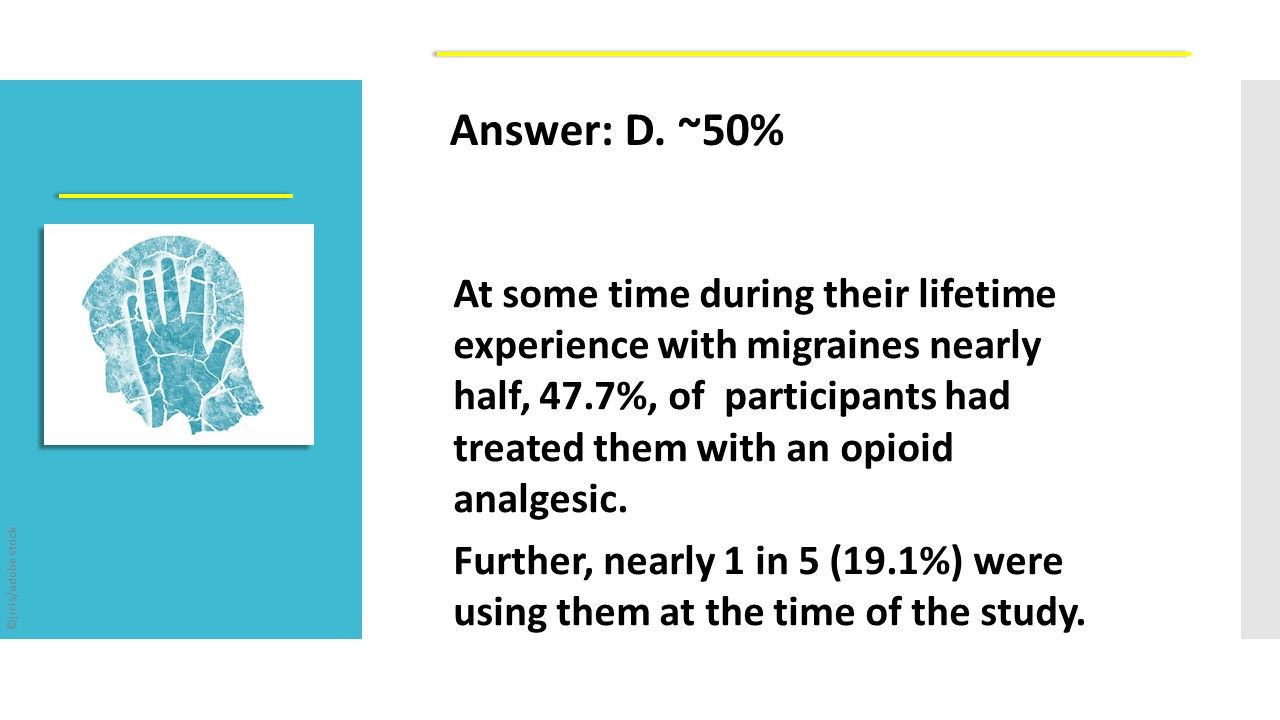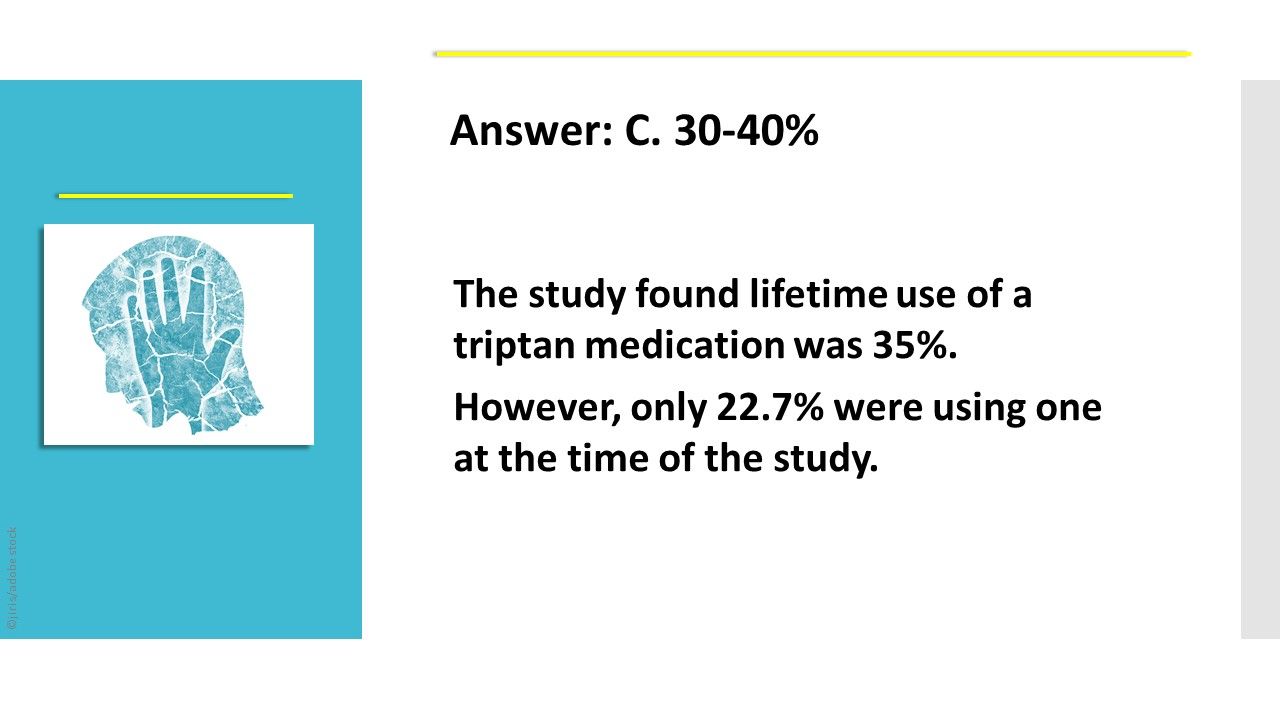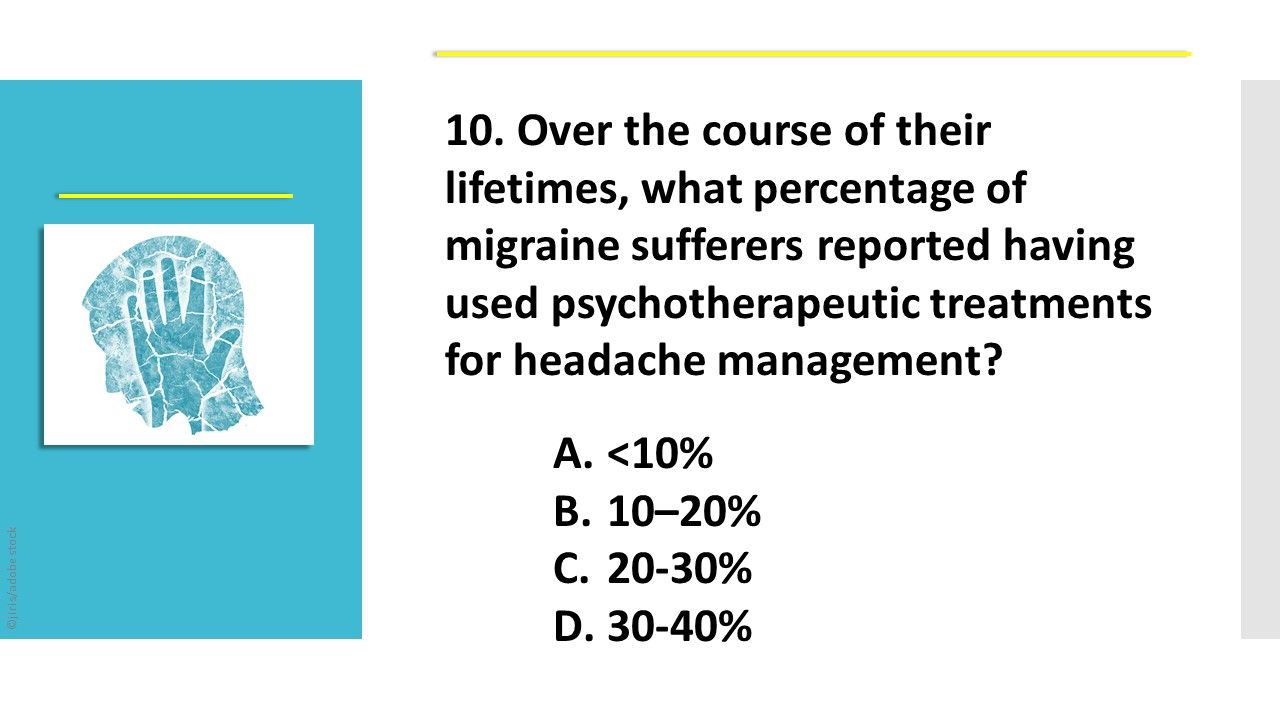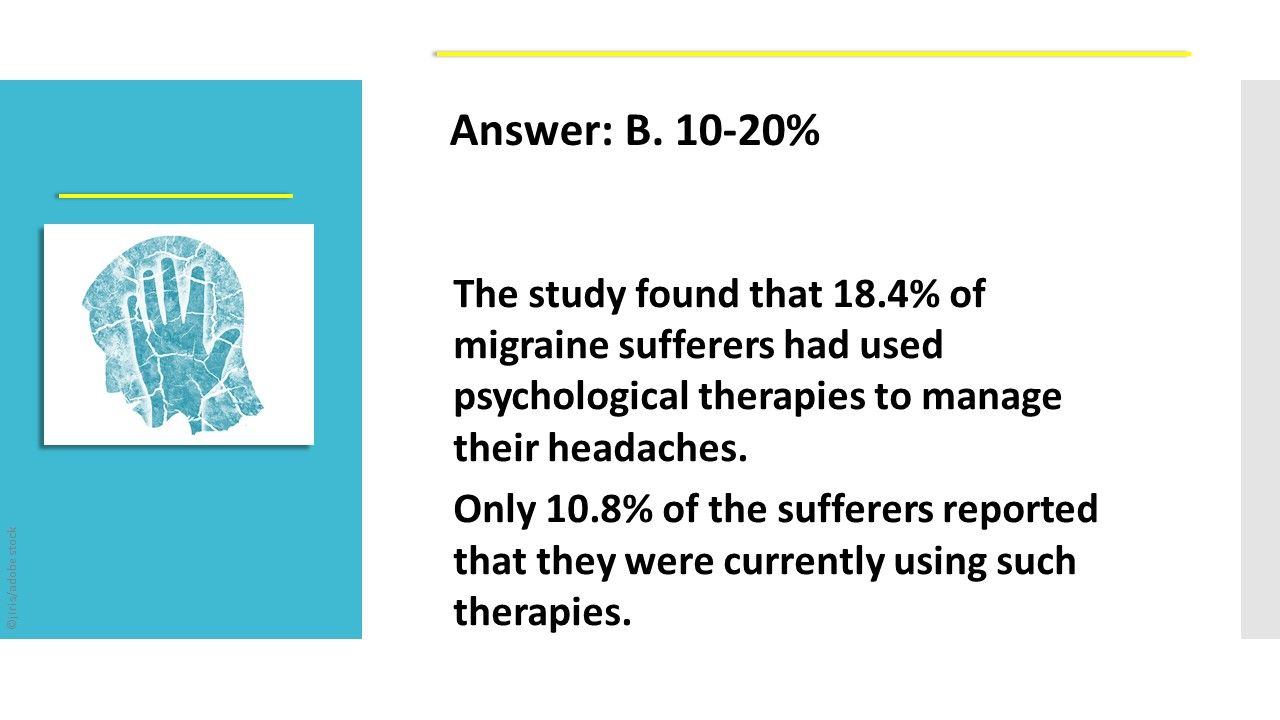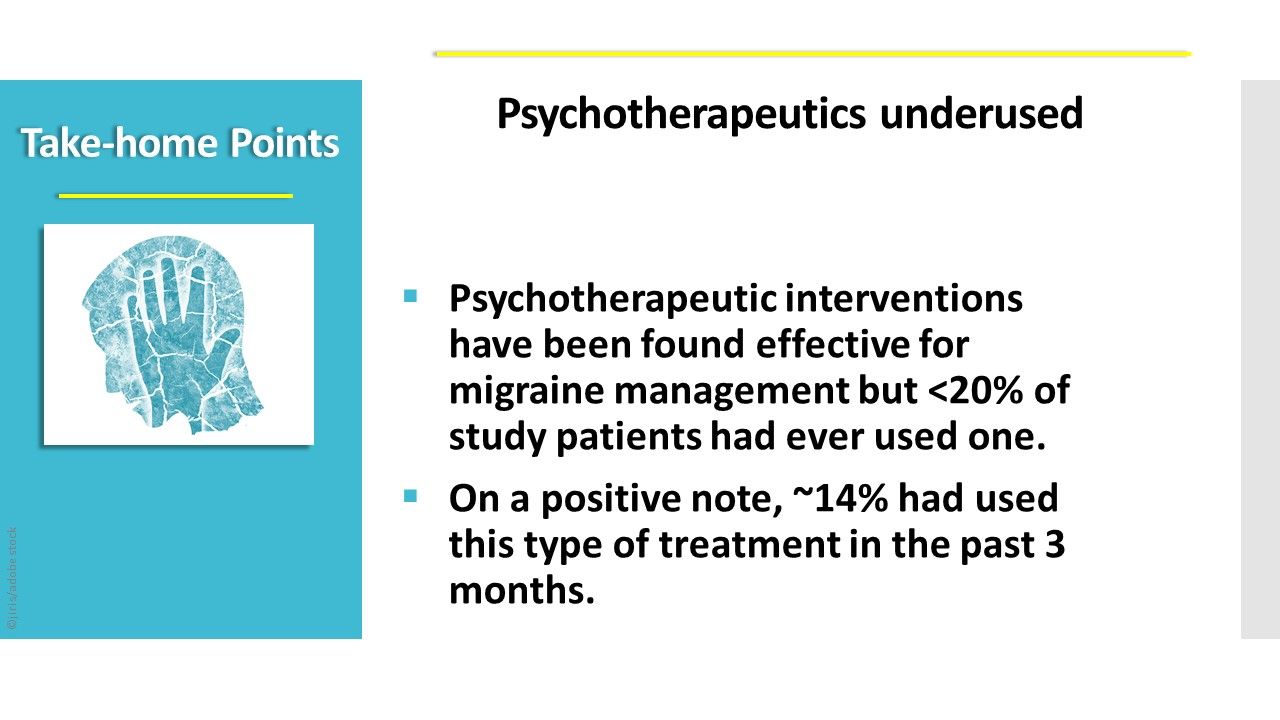1. What was the mean number of years between first onset of migraine symptoms and the diagnosis of migraine headaches?
2. What percentage of participants reported that migraine causes them at least moderate disability?
Answer: C. ~40%. Study authors found that 42.4% of those with migraines reported they experience at least moderate disability.
3. What percentage of OVERCOME participants with migraine were women?
Answer: B. ~75%. The majority of OVERCOME study participants, 74.2%, were women.
4. Over the course of their lifetimes, what percentage of migraine sufferers have gone to an emergency department or urgent care center for management of their migraines?
Answer: D. >30%. The study found that 31% had sought care for their migraines at a hospital emergency department or an urgent care center.
5. Based on the results of the study, the authors suggest that what percentage of migraine sufferers would benefit from preventive medications?
Answer: D. ~40%. The OVERCOME study findings found that 40.4% of the migraine sufferers would benefit from a preventive medication.
6. What percentage of patients was found to be using a migraine preventive medication?
Answer: A. ~15%. OVERCOME authors found that only 16.8% of those who would appear to benefit from preventive medications had used one during the previous year.
7. What percentage of OVERCOME participants with migraine are using acute abortive medications, either OTC or Rx?
Answer: D. >90%. The study found that 94.2% of participants with migraines were currently using an acute abortive medication to treat them.
8. What percentage of OVERCOME survey respondents reported at some time having used an opioid to threat their headaches?
Answer: D. ~50%. At some time during their lifetime experience with migraines nearly half, 47.7%, of OVERCOME participants had treated them with an opioid analgesic.
9. What percentage of patientsreported at some time having used a triptan medication to treat their headaches?
Answer: C. 30-40%. While 35% of participants reported lifetime use of a triptan medication, only 22.7% were currently using one.
10. Over the course of their lifetimes, what percentage of migraine sufferers reported having used psychotherapeutic treatments for headache management?
Answer: B. 10-20%. The OVERCOME study found that 18.4% of migraine sufferers had used psychological therapies to manage their headaches.
Nearly 1/3 of persons with migraine have gone to an ED or urgent care center for treatment, suggesting the headaches for many are not properly managed.
Opioid overuse. There is little evidence that opioids are beneficial for migraine treatment and the risk of adverse events, including exacerbating symptoms, far outweighs any potential benefits.
Lifetime use of triptan medications to treat acute episodic migraine was found to be low and only half those who were elibigle for and would benefit from preventive medication were currently using them.
Psychotherapeutic interventions have been found effective for migraine management but <20% of study patients had ever used one.

